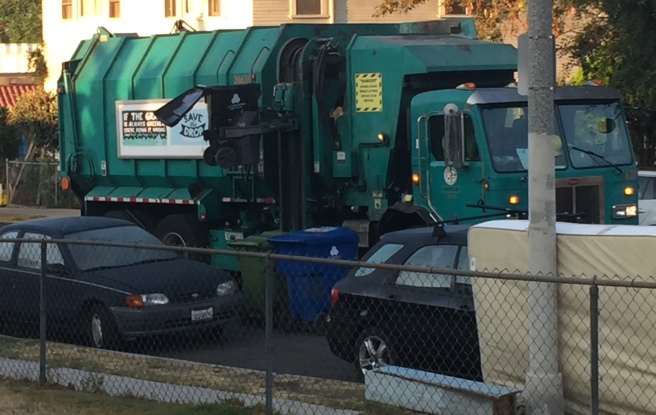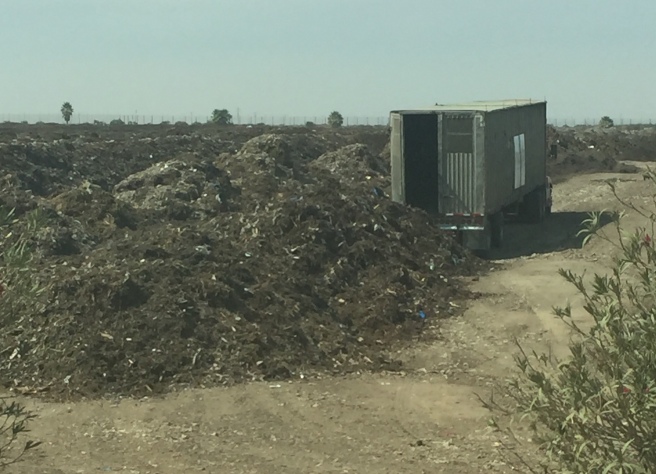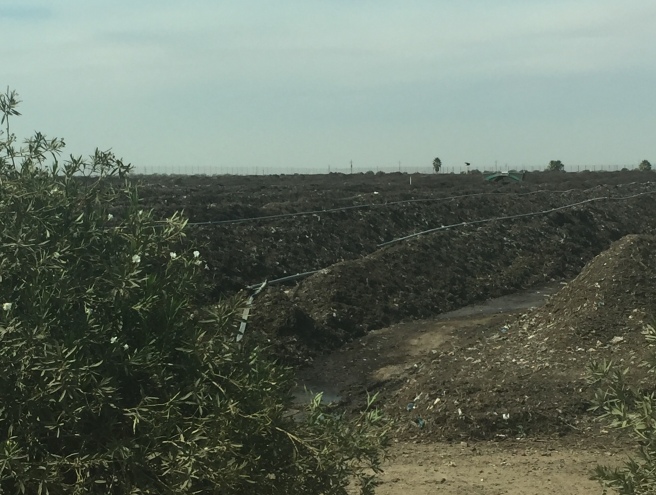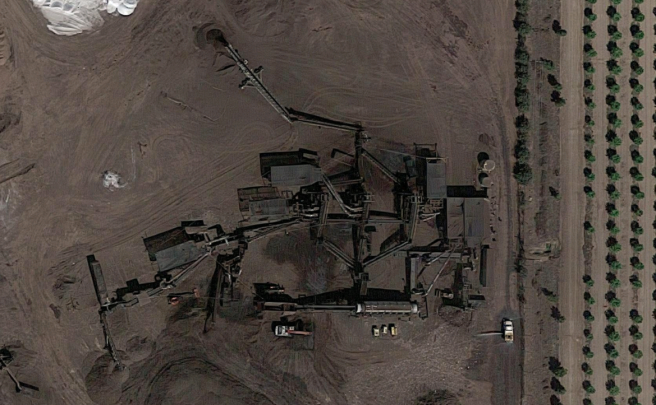Collection: Before material even makes it to Lamont, it must be collected. It sounds simple but complexities exist. Material originates not only from the bin placed out at the curb in residential neighborhoods but from several different sources and even that bin can be complex. Some residential bins collect yard waste only while some collect yard waste & food scraps. The composition or profile of the waste varies differently when food scraps are added and changes depending on neighborhood. Additionally, most of the waste comes from commercial and farm sources – again with its own profile. All these sources arrive at the Lamont facility via different pathways. Residential and some commercial material is received at Recology’s Sun Valley MRF. Other commercial and farm wastes arrive directly at the Lamont facility from various sources (other MRFs, farmers truck it in themselves, etc.)

Windrow Processing: The Lamont facility is the largest permitted composting facility west of the Mississippi. Every day, 150 tractor-trailers unload tons of organics. The logistics behind such a large scale operation can seem harrowing but the standard in large scale composting is to form windrows – long rows of material dumped out of the back of the tractor trailer and left in the field. Composting starts where the materials lies!

Several truckloads make a completed windrow which can be a couple hundred feet long. Once unloaded, the material must be covered with dirt to contain any gasses. And the windrow must be watered – with an ideal moisture content between 40-60%. The Lamont facility uses gray, filtered but untreated water from the Lamont wastewater plant. In addition to adding moisture, the water serves to further reduce the C:N ratio.

Initially, the row is a lumpy mess but the material must be turned to aerate the material. Aeration occurs every 3 days during the first 15 days, with a reduction in frequency after the first 15 days. To aerate, a giant windrow turner straddles a row and churns the material as it drives over the row. As the turner passes, the row is processed into a neat pile.
The entire composting process takes about 120 days. Throughout the process, the temperature is measured o ensure pathogens are destroyed and the compost is safe to use. Temperature is also a key insight into how the composting process is performing.
With windrow composting, the long processing time of 120 days requires large amounts of land. In vessel composting is a popular alternative in space constrained areas as it requires less space and completes the process in a shorter amount of time with greater control of environment for more precise conditions for composting.
Screening: At the end, most of the material will have processed into very small particles. But, plastic bags, nails, large pieces of wood which didn’t fully decompose will have to be removed. Material is loaded into a hopper which screens out particles larger than about 4 inches. Then the material is moved through a large rotating cylindrical tube with many holes on an incline – called a trommel screen. Properly sized material slips through the holes while oversized material continues to travel up the trommel, ending in the overs bin. The overs are sent to landfill. Prime material undergoes further screening: a magnet is passed over the material to capture ferrous metals (mostly nails left in trees) and a stream of air is passed through the material and into a vacuum to capture any plastic film material. Prime compost is sold to surround area farms.


没有评论:
发表评论